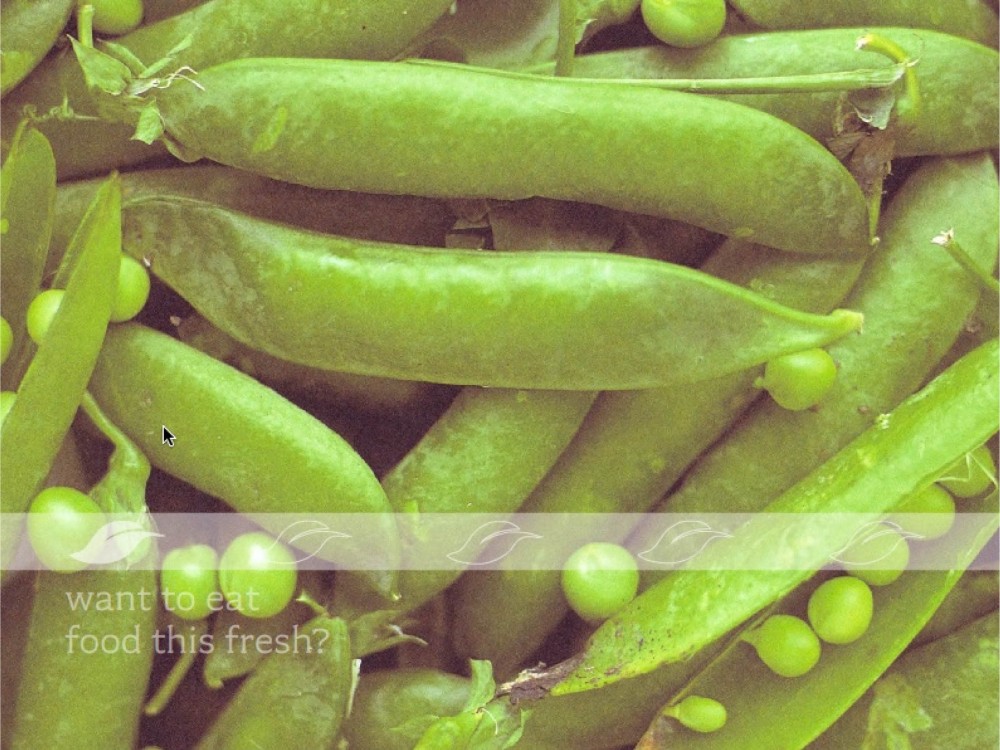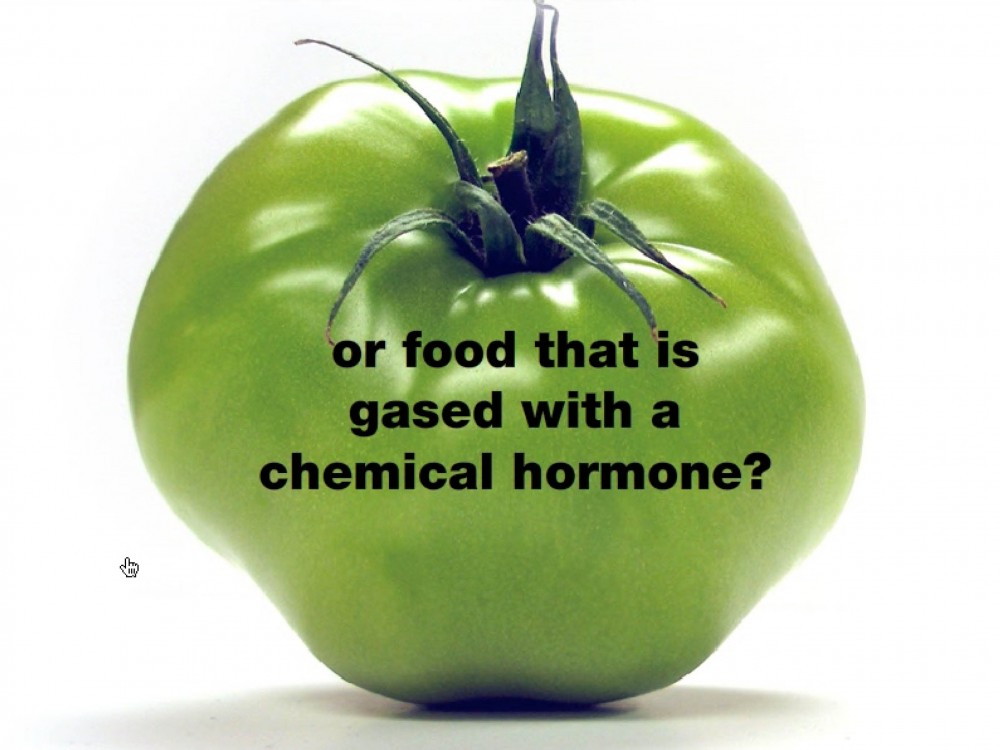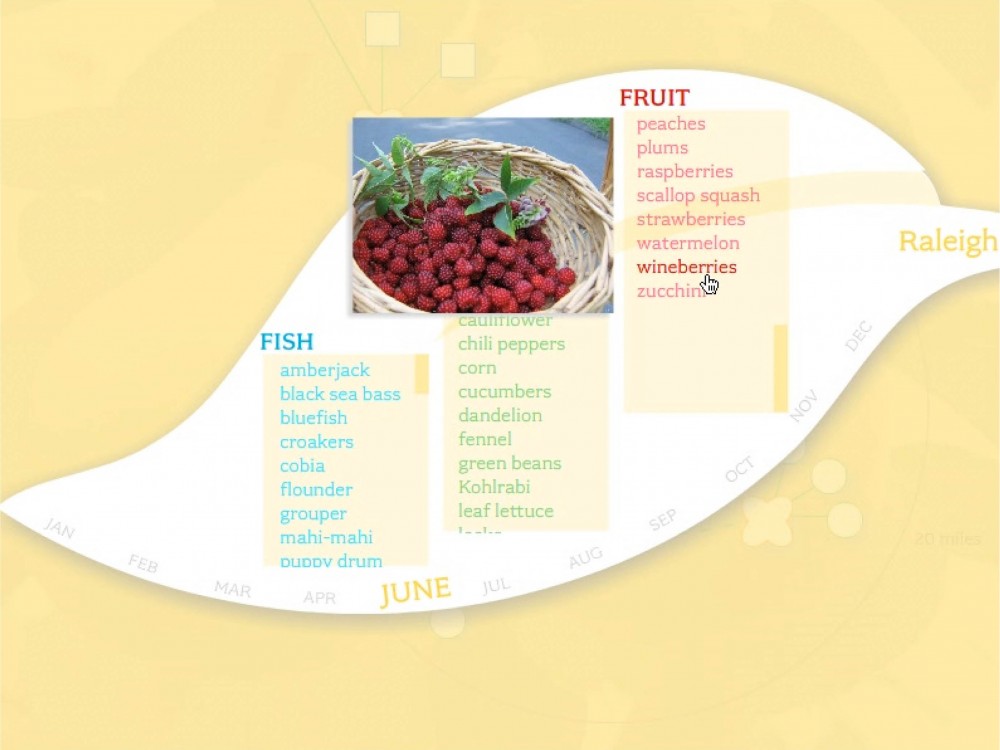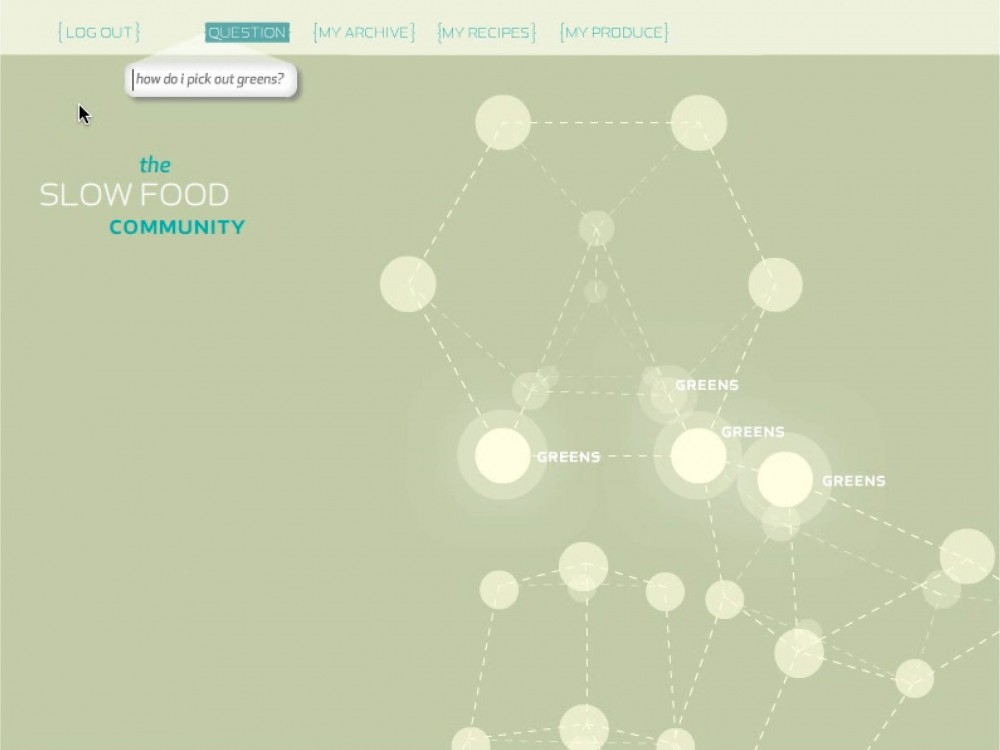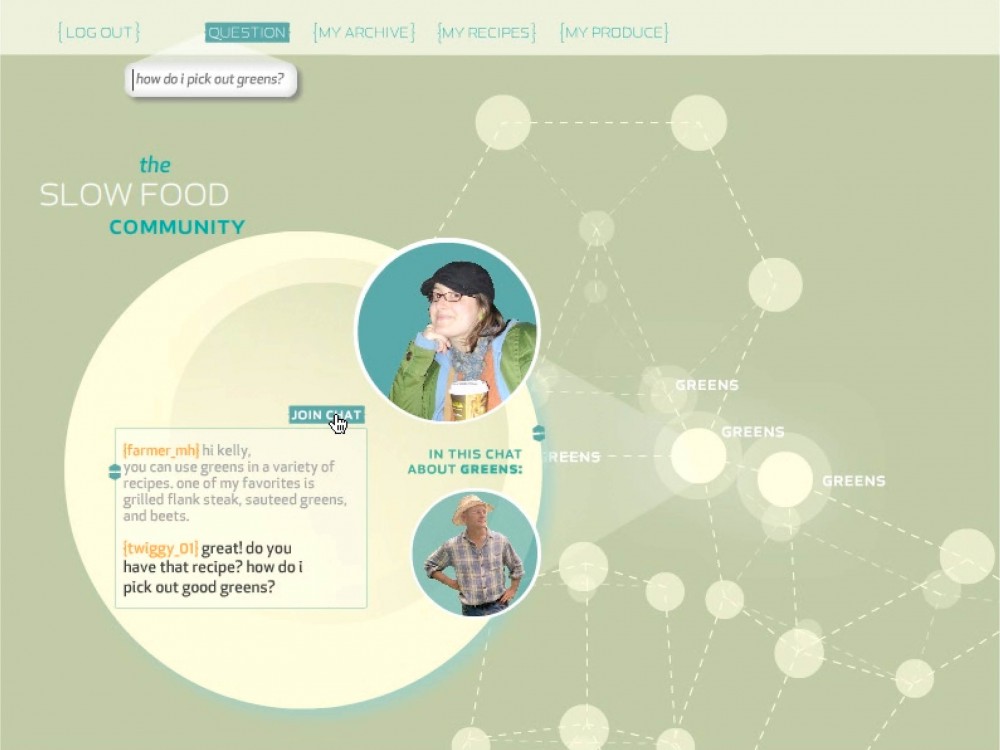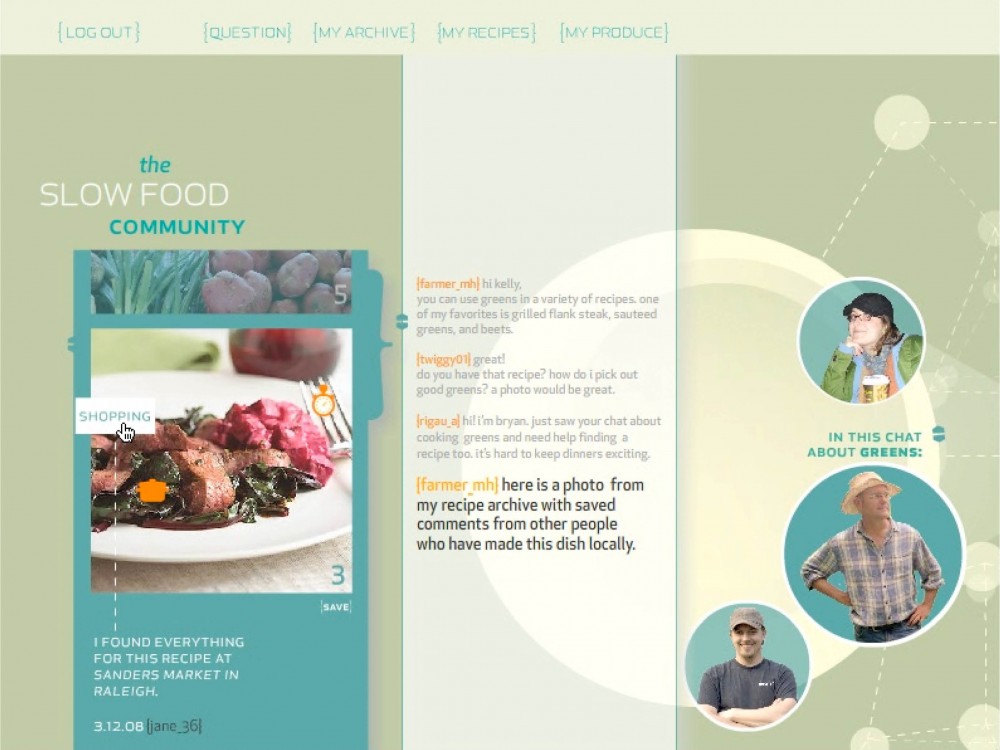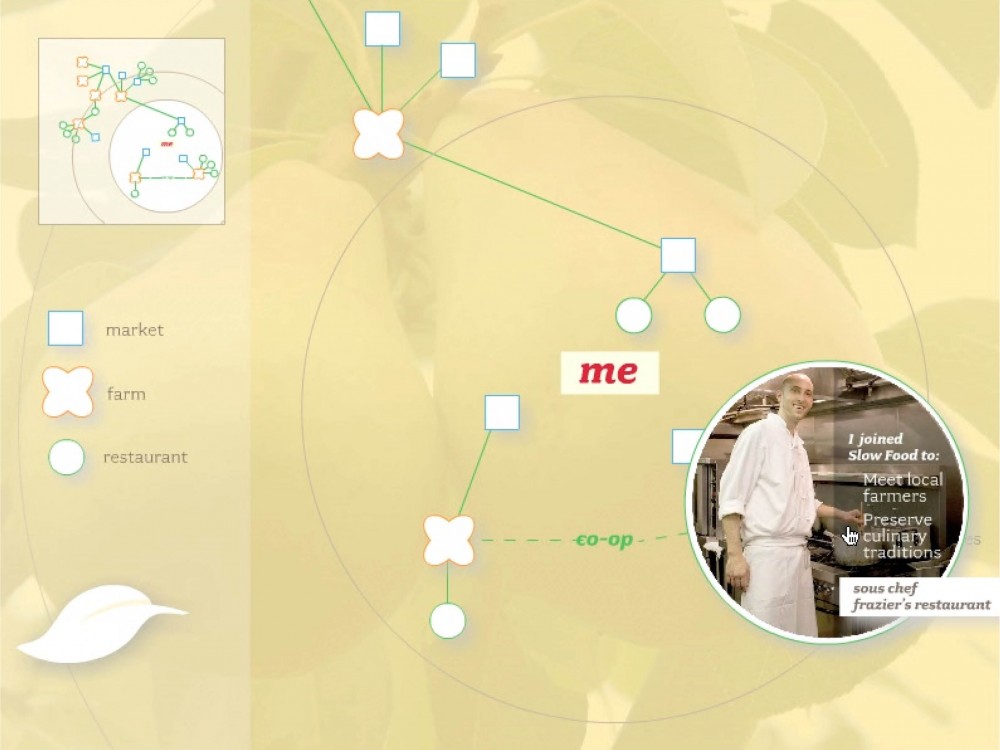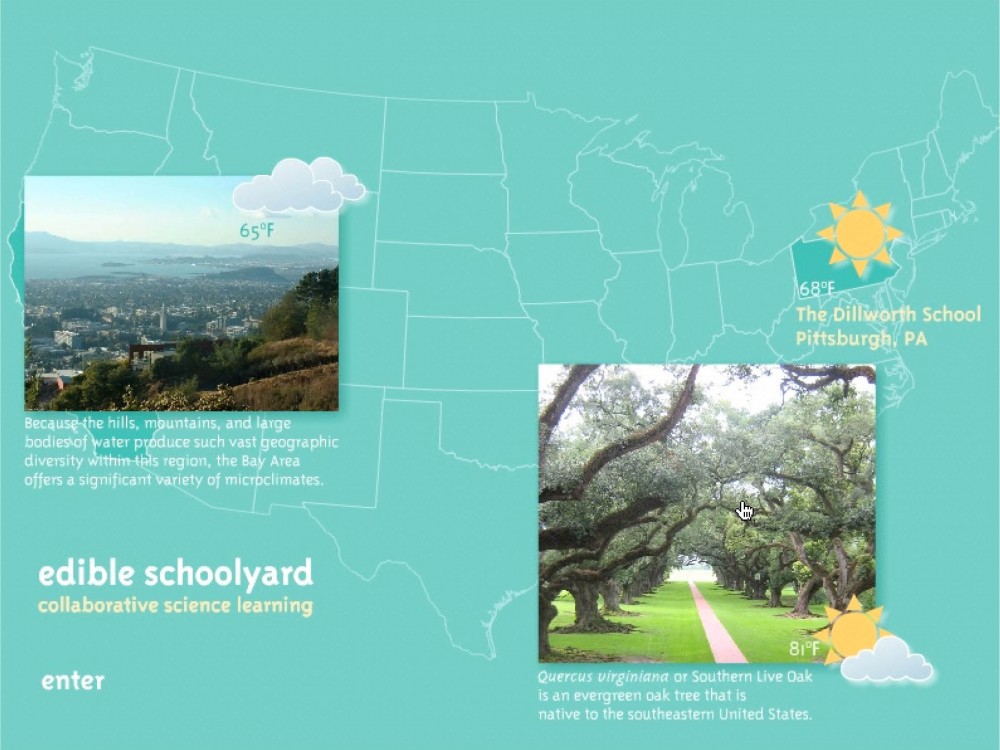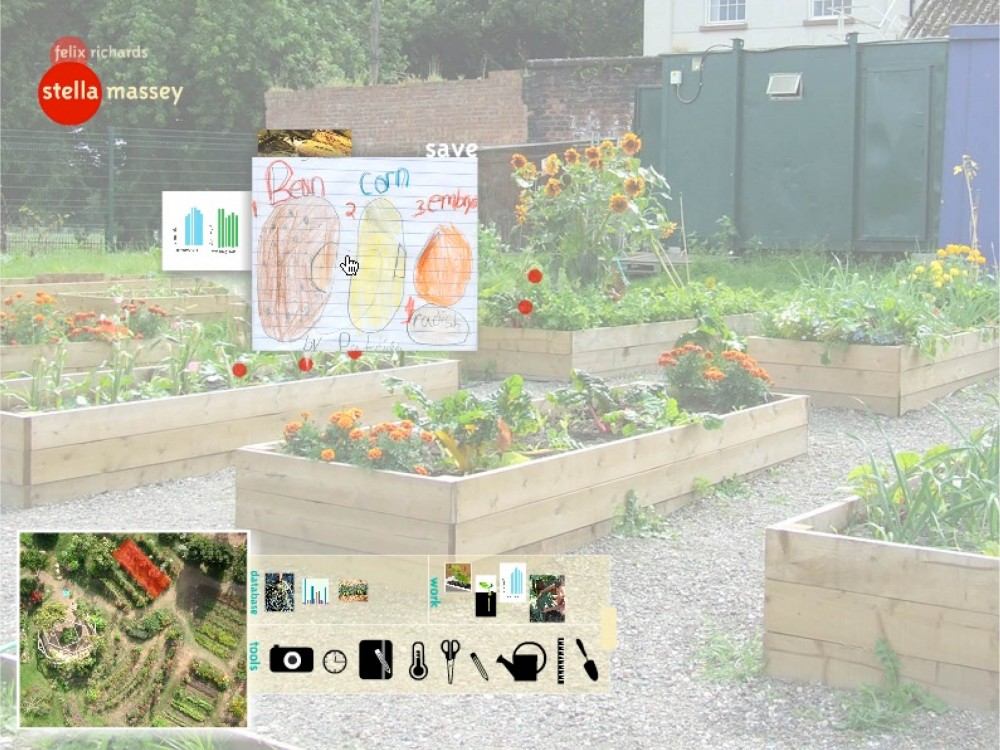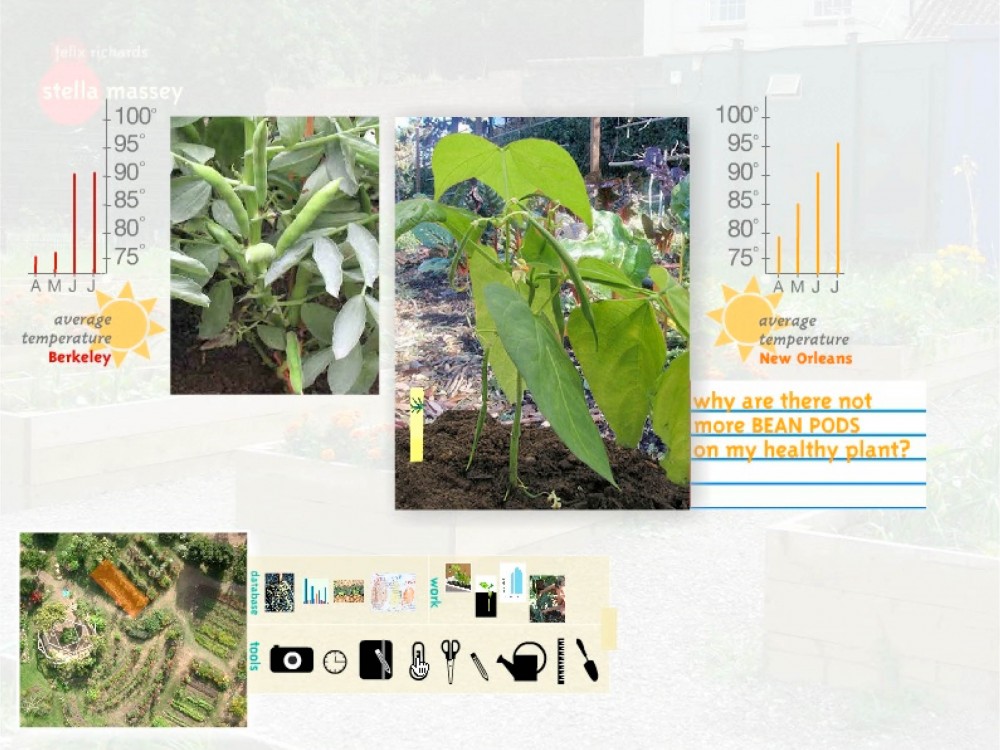Using design anthropologist Dori Tunstall’s five elements of community experience as a guide, I created an online experience for the slow food learning community. According to Dori, the five elements of community are: relationships, historical consciousness, life goals, organizational structure and agency. For the first exploration, the community identification, it was important to make sure the audience felt like the web space reflected their goals and interests. By juxtaposing images that are consistent with slow food values with those that are not, I was able to show the community members that they are linked not only by what they like, but what they don’t like. These shared interests may reveal their life goals and historical consciousness. A user can explore what produce and fish are in season in their local area and learn more about the items if they are obscure. Deeper into the web site, the community relationships are revealed.
The next phase of the project was to create the conditions for a community exchange. Exploring organizational structure, agency and relationships, I created a space that allowed community members to share knowledge and resources. Here, community members can share recipes, photos, shopping secrets and save all shared resources. They may even annotate on each shared resource. In addition, I was exploring different ways to represent chat spaces and online group conversations.
The last part of the project was to create the conditions for a collective task. Attempting to get at the life goals and agency of the community, I focused on a collaborative science learning project extending the edible school yard projects. Exploring informal learning and student-to-student learning, I developed a system that allowed three schools from varying parts of the country to share resources. The students were responsible for their own garden space and utilized other student’s spaces in order to learn.
